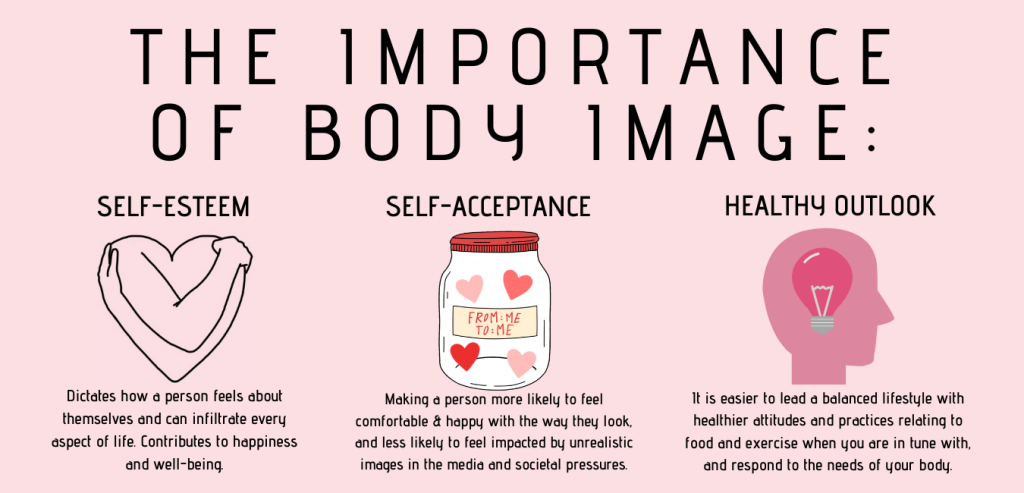Body image is a critical topic in today’s culture, especially as it pertains to children. Kids are bombarded with influences from fashion, social media, and popular culture that shape their perceptions of beauty and self-worth. As young as seven, children may already begin to feel the pressure to conform to unrealistic beauty standards, often exacerbated by platforms like TikTok that showcase filtered and altered images. The influence of icons such as Barbie can have a profound effect on children’s self-esteem, leaving them grappling with feelings of inadequacy. It’s crucial for parents to understand the impact of these societal pressures and to foster a healthy, body-positive environment, helping to raise kids that embrace their unique traits rather than conform to narrow definitions of beauty.
When discussing the perceptions of beauty, it’s essential to explore how self-image has evolved, particularly among youth. Today’s children are exposed to a plethora of messages regarding their appearance, stemming from social media and commercial fashion trends. This phenomenon has created new challenges as kids navigate an environment saturated with often unattainable beauty ideals. The interaction between popular culture, such as the allure of dolls like Barbie, and the quest for self-acceptance is critical in shaping their identities. Therefore, cultivating a supportive atmosphere where children can develop a positive outlook on their bodies is more vital than ever.
Understanding the Impact of Body Image on Children
In today’s society, the influence of body image on children cannot be underestimated. Children are increasingly exposed to beauty standards that prioritize unrealistic ideals, making it essential for parents to engage in conversations about body image early on. Research indicates that the way children perceive their bodies can be influenced by media exposure, including social media platforms and advertising. The pressure to conform to certain beauty standards can lead to self-esteem issues and even body dysmorphic disorders, which are alarmingly rising amongst younger demographics.
Communicating openly with children about body image allows them to understand that beauty comes in many forms. Teaching them the importance of self-acceptance and self-love can combat the negative messages they receive from external sources. Encouraging critical thinking about what they see in the media promotes a healthier perception of their bodies, helping them become more resilient in the face of societal pressures.
Frequently Asked Questions
How can parents help children develop a positive body image?
Parents can foster a positive body image in children by promoting healthy conversations about body diversity and self-acceptance. Encourage open discussions, where children can express their feelings about body image without fear of judgment. Provide media literacy education, teaching children to critically analyze the unrealistic beauty standards portrayed in fashion and social media. Additionally, model body positivity in your own life by practicing self-acceptance and avoiding negative speech about your own appearance.
What impact does social media have on children’s body image?
Social media significantly affects children’s body image by exposing them to highly curated and often unrealistic beauty standards. Platforms like Instagram and TikTok can amplify feelings of inadequacy, as children may compare themselves to influencers and peers who project seemingly perfect appearances. It’s essential for parents to discuss the difference between online personas and reality, helping children recognize that many images are digitally altered and do not represent true beauty.
How can parents address the fashion influence on kids and body image?
To mitigate the fashion industry’s negative influence on body image, parents should encourage children to see fashion as a form of self-expression rather than a standard to achieve. Discuss the importance of individuality and the idea that beauty comes in many forms. Introduce kids to brands that promote body positivity, diversity, and inclusivity. Additionally, engage in critical conversations about the harmful impacts of fast fashion and unrealistic body ideals often depicted in advertisements.
What role do toys like Barbie play in children’s body image development?
Toys like Barbie can significantly impact children’s body image by presenting narrow and often unattainable beauty ideals. While modern Barbies have embraced diversity, it’s important to discuss the historical context of these dolls and the messages they convey about beauty. Parents can use Barbie as a teaching tool, discussing the importance of character over appearance and encouraging children to appreciate their own uniqueness in contrast to toy representations.
What strategies can help raise body positive children?
Raising body positive children involves teaching them about body diversity and instilling self-love. Encourage them to participate in activities that promote body confidence, such as sports or creative expression. Facilitate conversations about body image, reinforcing that worth is not linked to appearance. Role-model healthy behaviors by showing positive self-talk and challenging societal beauty standards. Create an environment where differences are celebrated, and self-acceptance is prioritized over conformity to societal ideals.
How can parental influence help counteract negative body image messages in kids?
Parental influence is crucial in countering negative body image messages. Parents can serve as positive role models by exhibiting self-acceptance and practicing body positivity in everyday life. By fostering an open dialogue about societal pressures and media influences, parents can help children build critical thinking skills regarding body image. Encouraging children to engage with diverse representations of beauty through books, films, and media can also broaden their understanding and appreciation of all body types.
| Key Point | Description |
|---|---|
| Fashion Influence on Body Image | The rise of beauty standards and perfectionism in today’s society is heavily influenced by fashion, creating challenges for young girls. |
| Impact of Social Media | Social media exposes children to unrealistic beauty ideals, increasing the pressure to conform to these standards from a very young age. |
| Body Dysmorphia | There is a growing prevalence of body dysmorphia among children, particularly girls who feel the need to meet these beauty expectations. |
| Parental Advice | Parents are encouraged to promote body positivity and critical thinking about beauty standards to combat these pressures. |
| Fashion Shows and Early Exposure | Exposing young girls to fashion events raises concerns about fostering an early obsession with appearance and societal validation. |
| Cultural References | Popular culture, like movies and toys, heavily features idealized beauty standards that children internalize. |
| Education Initiatives | Programs like The Respect Project aim to educate children about recognizing and rejecting harmful beauty ideals. |
| Empowerment through Creativity | Encouraging children to express themselves creatively through fashion can help combat negative body image and societal pressures. |
Summary
Body image is a crucial topic in today’s society, impacting the self-esteem and mental health of many, especially young girls. It is essential to foster a positive body image in children by emphasizing that beauty comes in many forms, and not just the narrow ideals promoted by media and fashion. By instilling confidence and critical thinking, we can help them navigate the complexities of body image, freeing them from the constraints of societal expectations.



